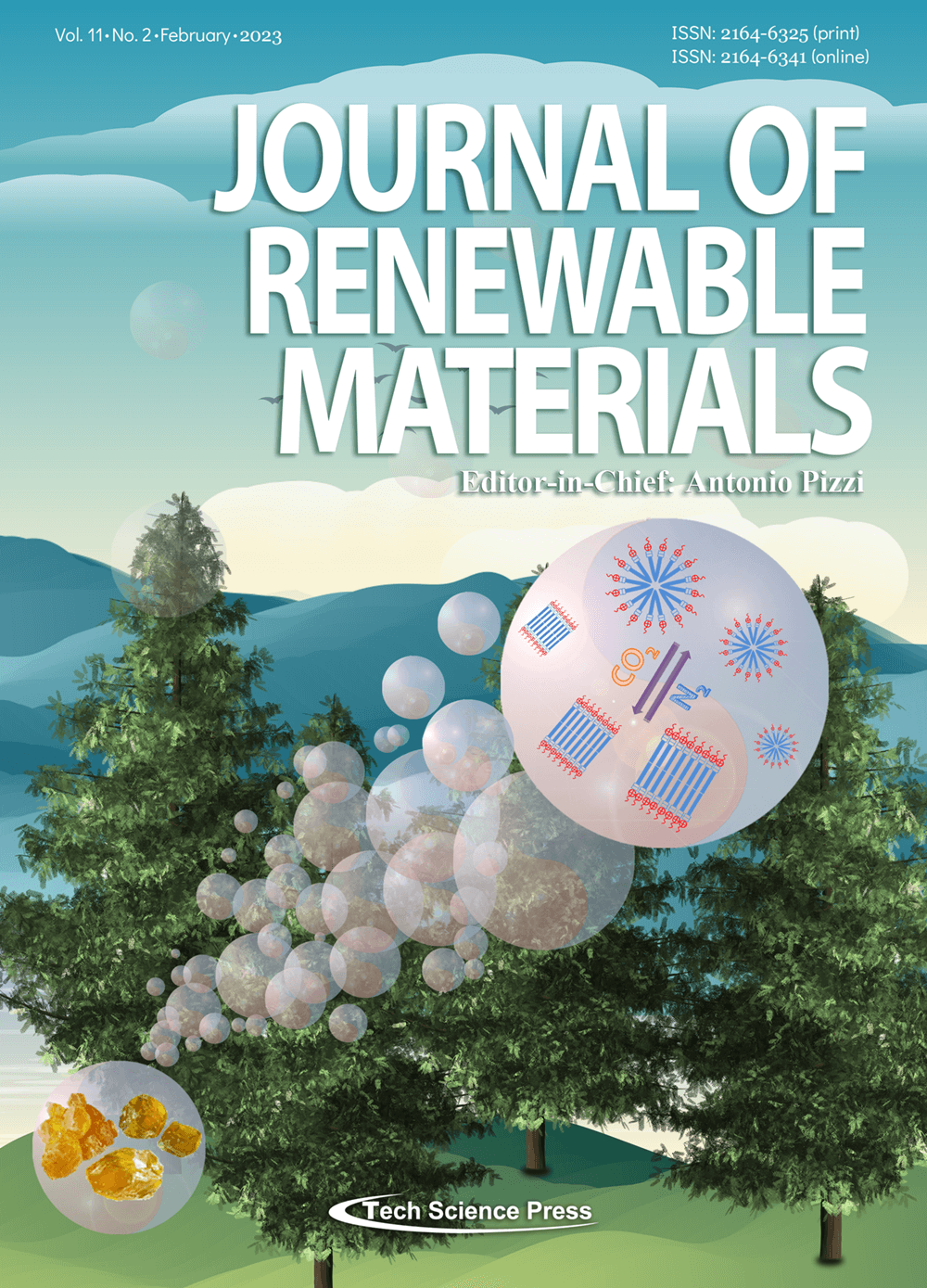Preparation and Properties of Chinese Lacquer Modified by Methylolureas
Qiang Xiao1,2, Yanjun Cao1,2, Hailu Tan1,2, Qiaoling Feng1,2, Xinyue Gu1,2, Jianhua Lyu1,2, Hui Xiao1,2, Ming Chen1,2,*, Yuzhu Chen1,2,*
Journal of Renewable Materials, Vol.11, No.2, pp. 1003-1016, 2023, DOI:10.32604/jrm.2022.023621
- 22 September 2022
(This article belongs to the Special Issue: Bio-Composite Materials and Structures-2021)
Abstract In this study, different molar of methylolureas (MMU) were used to improve the properties and drying speed of
the raw lacquer (RL). The drying time, gloss, pencil hardness and impact resistance of the lacquer film were tested.
The thermal behaviors and chemical structures of the lacquer membrane were also discussed by thermal gravimetric analysis (TGA), fourier infrared spectrometer (FT-IR) and nuclear magnetic resonance (NMR) analysis,
respectively. The results demonstrated that lower molar ratio MMU can significantly improve the properties of
lacquer. The TGA analysis showed that the modified lacquer had high thermal stability than that More >
Graphic Abstract
